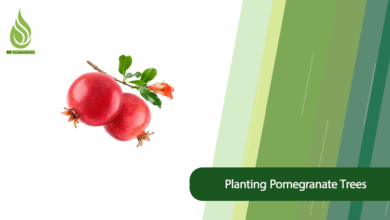
The effect of ammonium sulfate on rice paddies
To have a productive rice paddy, the land needs to be well-nourished. Fertilization plays a key role in promoting plant growth and boosting yields. Ammonium sulfate is recognized as a high-yield fertilizer that enhances the quality of rice paddies. In this article, we will explore the impact of using ammonium sulfate on rice paddies and guide how to effectively fertilize them.
What fertilizers does rice paddy need?
Rice paddies require various types of fertilizers to achieve optimal growth and performance. Some of the most crucial fertilizers needed for rice paddies include:
- Nitrogenous Fertilizers: Nitrogen is the most vital nutrient for the growth of rice plants. The commonly used nitrogenous fertilizers, such as ammonium sulfate and urea, and ammonium nitrate, have a significant impact on vegetative growth and the formation of rice grains.
- Phosphorus Fertilizers: Phosphorus is a vital nutrient for the growth of rice, contributing to increased yield and root development. Common phosphorus fertilizers used in rice paddies include urea phosphate and ammonium phosphate.
- Potassium Fertilizers: Potassium is vital for the growth and performance improvement of rice plants. Potassium fertilizers also help strengthen stems and leaves, increase disease resistance, and enhance grain quality. Potassium sulfate and potassium nitrate are among the potassium fertilizers used in rice paddies.
- Organic Fertilizers: Organic fertilizers are derived from animal or plant sources. These materials help improve soil structure, increase beneficial microorganisms, and aid plant growth. Compost is one of the organic fertilizers used in rice paddies, providing essential nutrients for plant growth. Green manure is another organic fertilizer used for rice plant growth. Click on the link to explore different types of organic fertilizers and read the provided article on this topic.
- Micronutrients such as iron, zinc, manganese, and copper play a significant role in rice metabolism and are widely utilized by farmers.
The best way to use these fertilizers is to utilize a balanced combination of them based on the plant’s needs. This is because excessive use of any of these fertilizers can lead to problems such as stunted plant growth and environmental pollution.

Effect of ammonium sulfate on rice
As previously explained, nitrogen is a crucial element for the growth of rice. Urea, ammonium sulfate, and ammonium nitrate are some of the most important chemical fertilizers that supply nitrogen to plants. Ammonium sulfate is a widely used nitrogen fertilizer for plant growth. In earlier articles, we’ve discussed the effects of ammonium sulfate, highlighting its significant impact on the growth of date palms.
Ammonium sulfate is a suitable source of nitrogen and sulfur. Ammonium sulfate fertilizer contains 21% nitrogen and 24% sulfur. The most important effects of ammonium sulfate on rice include the following:
- Proper Nitrogen Absorption: Ammonium sulfate fertilizer has less nitrogen loss compared to urea. When urea fertilizer is used without irrigation or rainfall, the nitrogen in the fertilizer is lost as ammonia gas. In contrast, ammonium sulfate is more stable, resulting in very little nitrogen loss. Reducing nitrogen loss with ammonium sulfate can lead to increased productivity in rice cultivation.
- Increased Yield: Ammonium sulfate boosts nitrogen levels for rice, leading to increased growth.
- Improved Grain Quality: The use of ammonium sulfate can enhance the quality of rice grains by increasing protein content and improving the taste and texture of the grains.
- Root Enhancement: Ammonium sulfate enhances the rice plant’s root system, leading to improved water and nutrient absorption and better plant growth.
- Cold Resistance Boost: Proper application of ammonium sulfate can enhance the cold resistance of rice plants.
- Protection Against Rot: The presence of sulfur in ammonium sulfate helps to prevent root and stem rot in plants, and also provides pesticidal properties for insect and fungus control.

Amount and timing of applying ammonium sulfate fertilizer in a rice paddy
Ammonium sulfate is utilized to provide the rice plant with sulfur and nitrogen. The typical application rate of ammonium sulfate per hectare is approximately 400 kilograms. However, the precise amount is determined by an expert based on soil requirements, weather conditions, and other factors.
Ammonium sulfate fertilizer is used in paddy fields at different stages of rice plant growth. Usually, half of the total amount needed is applied to the soil before planting or seeding, while the remaining half is added in two or three separate applications during the vegetative and reproductive stages.
For example, the amount and timing of applying ammonium sulfate fertilizer in rice per hectare can be as follows:
- 50 kilograms 5 days after seeding
- 100 kilograms 3 weeks after seeding
- 50 kilograms 5 weeks after seeding
- 50 kilograms 10 days before the appearance of panicles
The amount of fertilizer required for a paddy field is not fixed and can be influenced by various factors. For example, if rice is cultivated in a crop rotation system, the need for nitrogen fertilizer will vary. Excessive use of ammonium sulfate is not only unbeneficial for the plant, but it can also halt plant growth. Overuse of chemical fertilizers can lead to environmental pollution, nutrient depletion, and a decrease in the quality of agricultural products, including rice. Therefore, to determine the optimal dosage of ammonium sulfate and other fertilizers, it is important to consult with an agricultural expert or an experienced farmer.

Consequences of high soil nitrogen in paddy fields
As we mentioned, both low and high levels of nitrogen and other soil nutrients can be detrimental to rice plants. High levels of nitrogen combined with low levels of phosphorus, potassium, or other nutrients in the rice paddy fields manifest symptoms that we will discuss in this section by referring to some of these signs:
- Tall and weak stems
- Excessive leaf density
- Increase in non-fertile tillers
- Decrease in grain yield
- Reduction in grain filling efficiency
- Reduced grain quality
- Increased incidence of diseases like leaf blight and other pests
- Rise in insect damage
In paddy fields, soil testing is not very accurate for predicting nitrogen requirements, and it cannot provide an exact estimate of soil needs. The organic carbon or total nitrogen content of the soil does not affect nitrogen calculation for plant requirements in flooded fields. In these cases, agricultural experts with knowledge and experience can provide a reasonable estimate of soil needs. Experts usually measure the required nitrogen level in the soil by treating the soil under anaerobic conditions.
Where to get ammonium sulfate?
Up to this point, we have discussed the impact of ammonium sulfate on rice. This fertilizer is made available to consumers through imports or domestic production. You can purchase ammonium sulfate from importers of this fertilizer or through domestic producers.
Ammonium sulfate is produced in various forms. Different forms of ammonium sulfate have different qualities, granulations, solubilities, and colors. Ammonium sulfate crystal is one of the best forms of ammonium sulfate for rice paddies. By using ammonium sulfate crystal, you can maximize the growth of rice plants and rice crop yield. Basava Sepehr is the leading producer of ammonium sulfate crystal in Iran.
The ammonium sulfate produced at Barsava Sepehr has high solubility in water and is transparent, which enhances its absorption. Contact us to obtain the necessary amount of ammonium sulfate. Our colleagues are ready to answer all your questions and provide you with the necessary information about the product.

